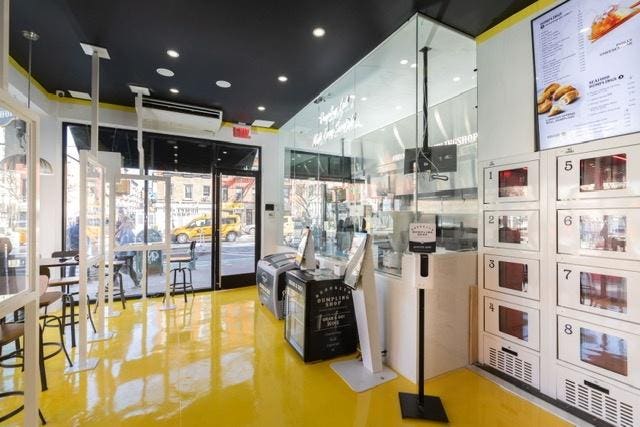While an unapologetic foodie, it was not necessarily my interest in seeking out new culinary adventures that led me to Stratis Morfogen. Rather, it was my interest in talking to him about his success as an “experience disruptor.” As the founder of Brooklyn Dumpling Shop, along with many other dining establishments, Stratis is among the increasing number of innovators who make up the fastest-growing segment of business today. These disruptive marketers are enjoying great success not by transforming what people buy, but transforming what they do. Instead of focusing on products for inspiration, they look through the lens of consumer experience, focusing on the routines of daily life with an eye toward making them better in some never-imagined way. Instead of assuming that people won’t change the way they’ve always done things, they are finding that if you offer them a more compelling option, they most certainly will. As a result, they are gaining incredible market advantage across a broad spectrum of categories.
Such is the case for Stratis Morfogen, one of the most innovative names in New York City’s hospitality scene for decades. From bringing the famed Fulton Fish Market online in 1997 to, most recently, reimagining the beloved automat concept for the Tik Tok generation with his expanding Brooklyn Dumpling Shop franchise, he continues to disrupt the status quo. His fascinating book, Be a Disruptor: Streetwise Lessons for Entrepreneurs, not only chronicles his own successful initiatives in the fierce New York restaurant world, but provides insights for anyone looking to find an untapped business opportunity in good times but, more significantly, in challenging times. While Stratis concentrates on the restaurant category, what he shares with other successful “disruptors” is an ability to zoom out and look at a brand, a business, a way of life, from a unique perspective. Instead of asking “what,” these innovators ask “how.” How can we make routine experiences easier, more desirable or just more fun?
“Most restauranteurs stay focused on what is. They try to optimize what they already do,” Stratis told me during our conversation. “I look at things differently. For example, I wanted to understand why so many fast-casual restaurants go under and determined that the number one reason was payroll.
I remember my dad bringing me to a Horn & Hardart automat when I was about ten years old and the idea stuck with me my whole life. It was genius. Lots of food options, a convenient self-serve delivery system, and very little employee overhead.”
Stratis’ genius in reimagining the automat experience for today’s market was two-fold. First, he conceived of a menu comprised of, yes, dumplings, an item that was a favorite at his Brooklyn Chop House venues. Rather than offering a plethora of choices, he “unbundled’ this culinary favorite from the more comprehensive menu and focused on making it the star attraction. He focused in and drilled down on what he knew he could execute quickly, and well. That said, the dumplings range from the expected – chicken, vegetable and shrimp – to the exotic – from Reuben, to Peanut Butter and Jelly, to French Onion Soup, to Lamb Gyro. The global flavors offer every type of cuisine to diners.
His second stroke of genius was going “back to the future” in terms of the automation. At the original automat, diners would drop a few coins into a slot and lift their food choice from a corresponding glass and chrome box. Updating the technology, at Brooklyn Dumpling Shop customers order their meals via smartphones or at an in-store kiosk, receive a text when their order is ready, and use a QR code to open the temperature-controlled locker. Simple contactless transactions. Fun, fresh food, all cooked to order. And, from a business standpoint? A reduction in labor costs from 30% – the industry standard – to 18%.
“I thought of the concept, the delivery platform, as smart phone plus automat,” said Stratis. “Launched during the pandemic, I realized that the time was right with people not wanting to interact. But the timing was a coincidence. I saw it as an opportunity that would last beyond COVID. This generation lives off their phones. They don’t need, or want, to interact with someone behind the counter.” That said, as Stratis told me, people do want to interact when there’s a share-worthy experience. “When we opened the first restaurant, I had reporters from all the big newspapers waiting to interview me. My 14-year-old daughter admonished, ‘Newspapers don’t matter. What matters is 6 million views on Tik Tok!’ She was right. I realized that I am not so much in the restaurant business as the reaction business. I created a restaurant for the Tik Tok generation using the automat as a model. We focused on being the best at one thing, owning the idea, and it’s working.”
And working, it is. Stratis designed his restaurant with profit, not COVID, in mind. He had a piece of kitchen machinery designed that can produce 30,000 dumplings an hour, enabling the filling of 1,200 made-to-order orders a day. Since its launch in 2021, the brand is now on track to have 125 units by the end of 2023 in the United States and Canada. It’s apparent that marrying dumplings – “a two-ounce sandwich” with the automat concept of yesteryear is perfect for the “grab-and-go customer seeking off-premises dining.
“When people come into the restaurant for the first time, they pull out their phones to take pictures. It’s the experience of something new. They want to share it,” Stratis said. “To be a disruptor you need to take risks.” Like the founders of Uber and Airbnb, Bonobos and Stitch Fix, Netflix and Discord, and so many other experience disruptors, Stratis Morfogen took a risk and found success, not by focusing on changing products, but by changing how consumers do the stuff of daily life – including meeting the need for a Reuben dumpling at 2 A.M.
Read the full article here





